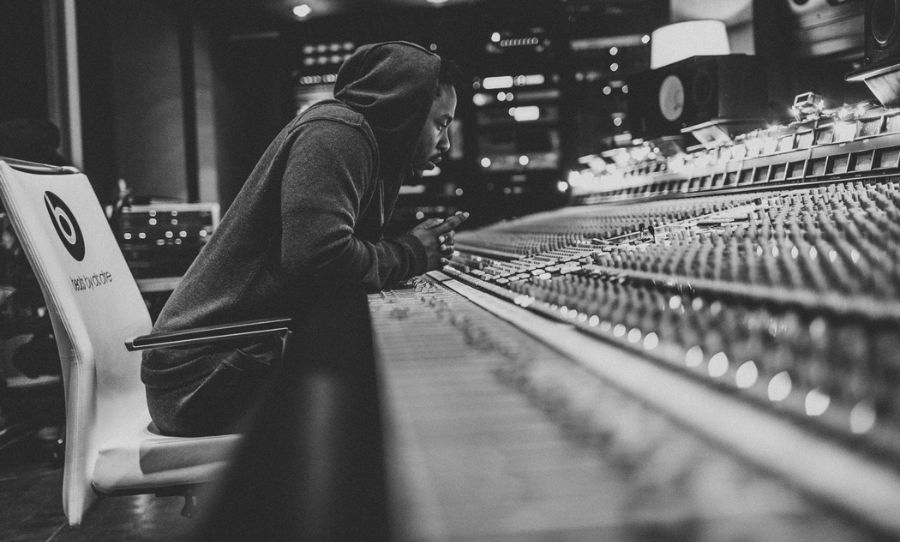The AKAI MPC simultaneously digitised beat-making, progressed the pastiche musical form, and freed hip hop from the confines of earlier technology.
In its youth, hip hop was fundamentally street music, formed at block parties in New York City in the 1970s, where all you needed was a beat. Creating a dance track meant looping small cuts of different records and arranging them to form a beat that you could move to. And this process of centering music around a collaged beat was eased through the birth of the drum machine.
The advent of the first AKAI MPC models, the AKAI MPC 60 (1989) and 3000 (1994) in particular, digitised beat-making, progressed the pastiche musical form, and turned hip hop into the versatile forum for social dialogue that it became by making music production available to the masses. In fact, the MPC 60 might be the single most important piece of technology in the evolution of hip-hop.

A New Age Drum Machine
The MPC 60 was the product of Roger Linn’s first (yet somewhat-arbitrary) attempt to design a new age, sample-based drum machine, constructed upon a number of fundamental concepts and design principles that are still used today. The machine changed the way beats could be assembled, and pushed for detail in the creation of the beat through the MIDI sequencer, a ‘swing’ or groove setting, and 16 hand-played push pads, which were volume-sensitive.
Although Linn has confessed, “I still think it’s funny that I’m considered to be so responsible for hip-hop because I don’t know it at all!”, his legacy lies in how he created a tool that resonated so profoundly with black artists, who transposed it as a product for progressing soul music.
The MPC fell into the lap of a genre that was based around sampling. This mode was so important because by sampling musicians of the past, black artists could explore current struggles and triumphs. It had something to do with the ongoing nature of certain social and cultural issues, and the overlay of samples in place of the stunted emotional expression and vulnerability of early rap music. It allowed the listener to mingle with a part of black culture, such as the gospel choir, while also working as a method to share music that was important to the producer’s identity.
Technically, the MPC 60 is a drum machine with a 12-bit sampler, 40kHz sampling rate, and 26.2 seconds of sampling space (1.5MB of memory). The MPC 3000 was a direct improvement on the 60, with a 16-bit sampler, 44.1kHz sampling rate, and up to 6 minutes of sampling space (32MB of memory).
The 3000 increased the number of sampling pads from 2 to 4, and progressed from a 16-note to a 32-note polyphony, adding greater complexity to the beat-making possibilities. The most significant difference was the additional filters and effects processing, which made it viable as a sample-based synthesiser with the potential to create a wide range of sounds.
Designing a Sound: The MPC ‘Swing’
A drum machine meant that you no longer had to be a seasoned drummer to create a beat. But it also made the process more experimental – the digital capabilities of these machines meant beat-makers could be more methodic in their approach to composing.
Linn explored this concept on the MPC 60 by introducing the concept of ‘swing’ on the 16th note beats, to simulate the inherent timing errors made by humans. It created a ‘natural’ feel through the addition of a dial that could adjust the 16th notes within the beat, in real time, as the beat was playing.
In an interview with Attack Magazine, Linn discusses the MPC’s groove: ‘Swing’, he describes, is “the ratio of time duration between the first and second 16th notes within each 8th note”. 50% swing meant equal timing between the first and second 16th notes, and 66% meant precise triplet timing between first and second 16th notes. This meant that a ‘looseness’ could be created in the beat when dials were altered to percentages between 50 and 66%, making the sound more natural.
The MPC was made to be universal. In a 2014 interview with Dazed, Linn analogises how he gave a prototype of the machine to Stevie Wonder, who found that the visual screen grid design, which pushed drum beats at pre-programmed moments in the song, was not intuitive to someone who could only hear, but not see, the sound being made. It was in this moment that he decided his drum machine needed to have audible feedback in real time.
An Old Music Box in New Hands
There was always a performative aspect to the MPC. The real-time feedback of the pads made it more of an instrument than a computer. More recently, with the diminishing influence of the drum machine due to new technologies, playing the MPC live has become an art-form in and of itself.
The tangibility and instrumental nature of the sampler is enticing to young producers, who see it as a physical entrenchment of the the computer software readily avaliable today. The ability to tweak the music in real time by adding effects makes it an intriguing live tool. And you’ll hear the same sentiment uttered far and wide when musicians talk about the magic of hardware synthesisers.
American producer AraabMuzik gained notoriety with his virtuosic playing the MPC 2500 live in ways that are simultaneously futuristic and reflective of the culturally inexhaustive hip hop past. He plays fast on the MPC like it is a video game keypad or a tiny piano, often with two hands, as the design – the 4×4 layout – allows.
By using the MPC 3000 to make the imperfections in the beat distinguishable, J Dilla was hugely influential in the development of the uneven sounds of early hip hop through music that innately questioned what made a ‘good’ beat. He seldom used the built-in quantisation of the MPC 3000. Instead he captured the looseness of live music through untidy live finger-drumming, and the messy sequencing of samples. He rejected the straight, synthetic rhythms that the drum machine could produce, and the predictability of this trend in hip hop.
Dilla’s beats often sound like a simple, repetitive loop at first. Yet, he creates layers by repeating single notes from a sample or random sound effects inconsequentially, or by tightly bunching a hi-hats and claps. This was possible because the MPC allowed for the sampling of milliseconds of sound in the way of a kick or snare, for example, or a tiny segment of vocals.
The way the piano is sampled on So Far to Go is stunted and crisp and cut in ‘all the wrong places’ to create an electronic feel for D’Angelo’s jazz piano. Dilla and the MPC made producers think about the ‘grooves’ that their machine could made, and what this did to the music.
When used today, the various AKAI MPC models immediately invokes early hip hop. There is a gritty sound inherent to the conversion of sample audio from the MPC; and the spontaneity of a drum beat is heard on the pads.
Hip hop’s liberator came in the form of a white industrial designer; was manufactured by a Japanese electronics brand; assumed by beat-makers rather than instrumentalists, who made music to the sounds of the city with a digital, transportable, cubic box. The hip hop we know today was born out of the sounds that the MPC samples; those of times and music past, as it impresses a culture onto the track. And it will likely continue to do so eternally.


